Nationality Austrian/German | Name Alexander Kircher | |
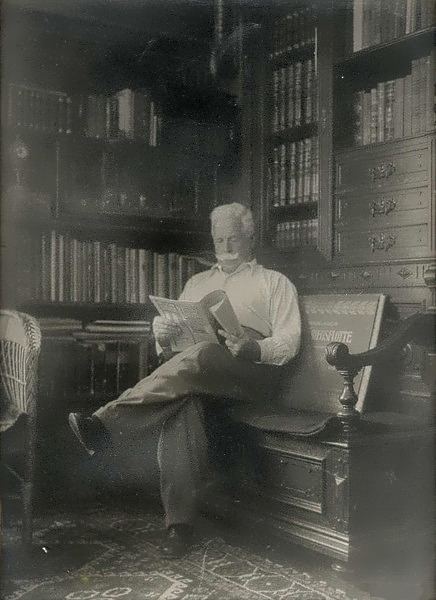 | ||
Known for Marine and landscape paintings, drawings and illustrations Patrons Franz Joseph I of Austria, Wilhelm II | ||
Alexander Kircher
Alexander Kircher (26 February 1867 – 16 September 1939) was an Austrian-German marine- and landscape painter and an illustrator. Many of his paintings are exhibited in museums in Germany, Austria, Croatia and Slovenia or are privately owned in those countries. But there are also some of his paintings in the United States of America, Great Britain, Scandinavia and Greece. The paintings of Kircher are offered at leading auction houses such as Christie's and Bonhams London, Sotheby's New York, Burchard Galleries St.Petersburg Florida, Stahl Hamburg, Van Ham Cologne, the Dorotheum in Vienna and several others. The majority of his paintings the artist signed with Alex Kircher, where he sometimes wrote the year of the creation of the image below. But in his paintings, you will also find the signatures as shown here by the auction house to German Bergmann auction.
Contents
- Alexander Kircher
- Life
- Awards and decorations
- Collection of paintings excerpt
- Larger Image collections
- Stolen artwork
- Others
- Literature
- Exhibitions
- References
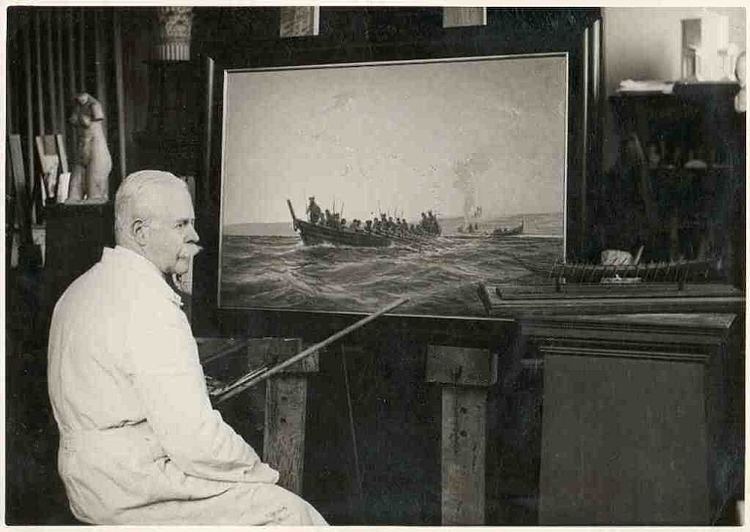
Life
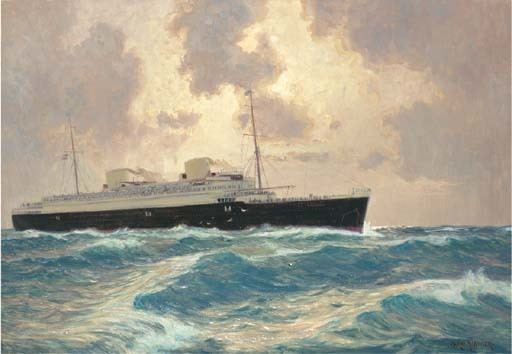
Kircher was born in Trieste, which belonged at that time to the Austro-Hungarian Empire (Habsburg Monarchy). As a young man he intended to choose the profession of a naval officer in the Austro-Hungarian Navy. Because of a foot injury his application was rejected. In 1888 he opted for studying painting at the Berlin Academy, where he concentrated mainly on marine painting from the start. His teachers were Hans Gude and Hermann Eschke.
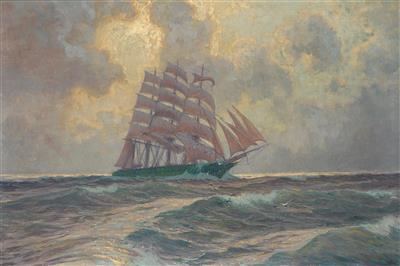
Kircher made numerous study trips throughout Europa, Asia, North America and Egypt. During these travels, he made several important paintings, drawings and illustrations. In 1893 he worked on the picturesque decoration of buildings at the World Exhibition in Chicago as well as panoramas and dioramas of the marine painter de:Hans von Petersen. In addition, Kircher worked as an illustrator for popular German and foreign magazines and publishers of which only a few can be mentioned: The Leipziger Illustrierte Zeitung or the modern illustrated weekly Reclams universe (Leipzig), the writings of the Austrian (Vienna) and the German fleet association (Berlin) and the Viennese publisher Philipp & Kramer, for which he designed the postcard series "Dalmatia and Istria". These include Feldpost, postcards which Kircher created for the Austrian Red Cross, the War Welfare Office or the War Aid Office and also for the London Postcard Publisher Raphael Tuck & Sons and the Swedish Postcards Publisher: "Gothenburg Lithographic AB and Meyer & Köster" etc. For some time Kircher owned a steam yacht, which he named Romana – this was his wife's name. With this ship he could better motives collect and draw maritime objects from the area. This he did for example in fleet parades.
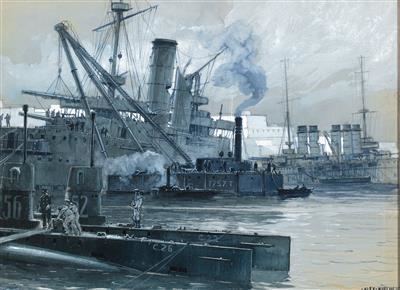
Between 1895 and 1900 he was a professor at the Art Academy in Trieste and married Romana Salmassi in the Chiesa di Sant'Antonio Taumaturgo on October 15, 1898. From this connection, three sons and three daughters were born. In 1904, after a short stay in Vienna, Kircher moved from Trieste to Dresden, where he lived until 1906 and where he joined as a freelance artist to the General German art cooperative. 1906 the family moved to Moritzburg. From 1922 Kircher lived in Niederlößnitz at Villa Jagdweg 6 and from 1933 to about 1935 in Kötzschenbroda-Niederlößnitz. In June 1935, Kircher's wife died. Then the painter moved to Klotzsche in a residential building, which belonged to the former Air War School Klotzsche.
Influential members of the nobility and some industrialists – especially from the circles of Maritime Navigation – promoted the artist. First of them Emperor Franz Joseph I and Emperor Wilhelm II. On behalf of these two monarchs, Kircher painted numerous images of the Austro-Hungarian Navy and the Imperial German Navy. His paintings were also found on the large passenger ships of the time, as well as in the offices of well known shipping companies and shipyards and of course also in private ownership. During World War II, several images got lost or disappeared. An example of the many lost images is the large oil painting of the steamship Columbus ("The Columbus in the Kaiser lock"). This painting was given by the North German Lloyd as a gift to the city of Bremerhaven on the occasion of its 100th anniversary in 1927. The painting has disappeared at the end of World War II (1945). Others of his paintings have been preserved for posterity and can be seen in many museums today; see list of locations excerpt.
Kircher concluded his life's work with a series of one hundred paintings which documented the development of German shipping over a millennium and which hung in the Institute and Museum of Oceanography MfM. of the University of Berlin. The current location of the works is unknown, reproductions have since appeared as an image panel work (1934) and in book form (1939) and recently only in parts on CD-ROM (2010). Meanwhile, 22 images, of which the majority is from the collection of MfM, were rediscovered in the archives of Wehrgeschichtliches Training Centre of the Naval Academy Mürwik in Flensburg-Mürwik. Kircher died on September 16, 1939, in Berlin, the last place where he had worked. The painter was laid to rest in the family grave in Moritzburg, Saxony.
Awards and decorations
Kircher received the Spanish Order of Isabella the Catholic in February 1909 in the Spanish Embassy in Berlin. This award will be given for services to art and science.
Collection of paintings (excerpt)
Larger Image collections
Stolen artwork
Others
In the remarkable Austro-Hungarian Navy Museum "Gallerion", in Novigrad, Istria (Croatia), multiple replicas and photographs of well known Kircher paintings will be shown.
